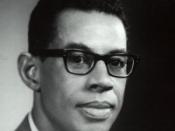"Alternative Dispute Resolution (ADR) is a process in which a third neutral party assists in resolving disputes by using various techniques to reach a resolution acceptable to the parties" (The U.S. Equal Employment Opportunity Commission, 2005). I will be going over an Alternative Dispute Scenario about a female employee who just graduated from college, who claims that an older male worker (with 30-years of outstanding service to his company) has sexually harassed her, even though the other female workers did not see the man's actions as violating.
The other methods to solve this without ADR will most likely achieve negative drastic measures. The man could get fired for what could be sexual harassment and the company will lose a productive worker. Litigation will concentrate about two conflicting or contrasting positions of the parties positions, cost huge amounts of money for attorney fees, little benefit for the company after the settlement, and much damage done to the male employee.
"Because Hawaii law does not limit the damages for a discrimination claim, and it is easier in Hawaii state court to prevent summary judgment (a dismissal of the case by a judge prior to trial after disputed and undisputed facts have been presented), many attorneys in Hawaii choose to file employment discrimination cases in state court. However, cases may be brought in either state or federal court." (Workplace Fairness, 2006)
There are even more methods of solving this problem with ADR. "The most common form of ADR is arbitration. Other forms of ADR are mediation, conciliation, minitrial, fact-finding, and a judicial referee" (Cheeseman, 2004, p.41).
In arbitration, a neutral and impartial third party called the arbitrator, issues an award after he or she hears both sides and makes a decision. Arbitration could be less costly, more quick, and a more...


